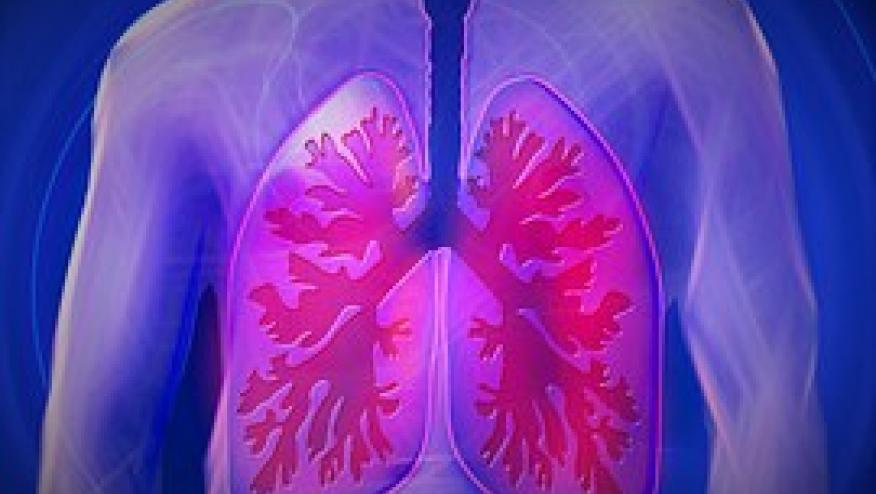Scleroderma-associated Interstitial Lung Disease Save

Take-home points:
- Randomized controlled trials and society guidelines provide an evidence basis to guide evaluation, monitoring, and management decisions for the care of patients with SSc.
- Shared decision-making carries a lot of weight in a disease in which the therapies carry significant risks of side effects.
- Glucocorticoids should be avoided due to the risk of their use outweighing the benefit, in the ILD characteristically associated with SSc.
- Differentiating SSc-ILD from other potential causes or contributors to dyspnea is requisite to optimize treatment approaches such that pulmonary vascular disease and cardiac manifestations may also be addressed.
Since the first placebo-controlled randomized trial published nearly 20 years ago for the treatment of patients with SSc-ILD, evaluating cyclophosphamide vs. placebo, there have been several other randomized studies to guide the management approach, using medications with lower toxicities, in patients with SSc-ILD. Additionally, the American College of Rheumatology (ACR) published guidelines for the evaluation, monitoring, and treatment of ILD in patients with systemic autoimmune rheumatic diseases (SARDs), which includes SSc. In the same year (2024), the American Thoracic Society (ATS) similarly published guidelines for the treatment of SSc-ILD. Now with recognized guidance, clinicians can offer evidence-based recommendations to their patients, outlining benefit and side-effect profiles, to optimize shared decision-making.
While we know there are certain clinical features serving as predictors that patients with SSc may develop ILD, including diffuse skin disease and serologies such as anti-Scl-70 and Th/To antibodies, it is imperative that clinicians consider that any patient, particularly early in their disease course (<5 years of disease since the first non-Raynaud phenomenon symptom) could develop ILD. SSc-ILD has been estimated to be clinically manifest in 50-60% of patients with SSc, and postmortem studies have found ILD changes in over 80% of patients with SSc. For these reasons baseline and routine screening of patients for ILD is warranted.
A careful history should include not solely asking for symptoms of dyspnea or dyspnea on exertion but delineating whether routine activities require more time or periodic breaks due to the patient’s breathing or energy level. In addition to a careful history and physical examination objective testing is indicated. Baseline screening includes pulmonary function tests (PFTs) and high-resolution computed tomography of the chest (HRCT). Chest radiography is not recommended for screening. HRCT is an important baseline test as some patients may have lung volumes within the normal range (>80% predicted) at baseline, yet they may have already declined from even higher levels; the finding of ILD on HRCT, most commonly a nonspecific interstitial pneumonia (NSIP) pattern, is thus very informative. If ILD is not detected at baseline, routine screening is recommended with clinical evaluation and PFTs every 6-12 months for the first several years of disease, frequency of evaluation relating to the patient’s symptoms and risk factors.
Upon the diagnosis of SSc-ILD, monitoring with PFTs every 3-6 months in the first year is recommended, then less often for patients with improved or stable disease. Repeat HRCT is recommended for those patients with a change or progression of symptoms; routinely repeating the HRCT is not typically warranted for a patient on treatment demonstrating stability or improvement in symptoms and PFTs. Bronchoalveolar lavage is useful in the setting of suspected infection but is not used diagnostically for SSc-ILD. Similarly, a surgical lung biopsy is not warranted for SSc-ILD, though it can be considered if another pulmonary process is suspected.
Mycophenolate mofetil (MMF) is the mainstay of treatment for SSc-ILD. While cyclophosphamide has demonstrated efficacy and improvement in quality of life for patients with SSc-ILD, it is associated with increased toxicity. Anti-fibrotic therapy, such as nintedinib, is also a consideration and, in a clinical trial, nearly 50% of patients with SSc-ILD received nintedinib in addition to MMF. Nintedinib, with or without MMF, demonstrated a reduced annual rate of loss of forced vital capacity (FVC) and thus is of consideration for those with SSc-ILD, particularly those with a fibrotic component or those showing progression on MMF monotherapy. However, the nintedinib side effect profile, particularly gastrointestinal side effects, may not be well tolerated by patients with SSc. A study of tocilizumab in patients with early diffuse cutaneous SSc did not meet the primary endpoint of skin score efficacy; however, it was found, in patients with diffuse SSc and elevated c-reactive protein (CRP), including those with lung disease, to slow the decline in FVC. Rituximab has been shown to not be superior to cyclophosphamide in efficacy as both medications improved FVC in patients with SSc-ILD, yet since rituximab was associated with a better side effect profile, it represents a preferred choice over cyclophosphamide.
Despite the expanding evidence for the role of immunosuppressive medications in treating SSc-ILD, there remains no place for glucocorticoids. Glucocorticoids are important for treating other SARD-ILD, particularly rapidly progressive ILD as may occur in patients with idiopathic inflammatory myopathies, but there is no place for glucocorticoids in treating SSc-ILD. Those with SSc-ILD rarely if ever have a rapidly progressive presentation, and there is evidence for significant risk, particularly of normotensive renal crisis, associated with glucocorticoid treatment in patients with SSc, particularly for patients receiving prednisone-equivalent doses 15 mg daily or higher. The association of glucocorticoid use with normotensive renal crisis calls for a strong recommendation against the use of glucocorticoids in patients with SSc, in the absence of a life-threatening or organ threatening reason for use. SSc ILD is not one of these reasons, and glucocorticoid use should be avoided.
ILD is a frequent clinical manifestation in patients with SSc, yet there are other clinical features of this disease that may be contributory to a patient’s dyspnea. In this way, if a patient is not responding to treatment for their underlying ILD, in addition to evaluating the patient for disease progression, a broad approach should be taken, considerating other potential contributors such as anemia, pulmonary vascular disease, SSc-cardiac involvement, or an overlap with another SARD with different pulmonary features. Managing patients with SSc-ILD is optimized by a comprehensive, collaborative, and interdisciplinary approach to their care.
Bibliography
Distler O, Highland KB, Gahlemann M et al. Nintedinib for scleroderma-associated interstitial lung disease. N Engl J Med 2019;380:2518-28.
Ganesh Raghu, Sydney B. Montesi, Richard M. Silver, et al on behalf of the American Thoracic Society Assembly on Clinical Problems. Treatment of systemic sclerosis–associated interstitial lung disease: evidence-based recommendations. An official American Thoracic Society clinical practice guideline. Am J Respir Crit Care Med 2024; 209: 137–152.
Johnson SR, Bernstein EJ, Bolster MB, et al. 2023 American College of Rheumatology (ACR)/American College of Chest Physicians (CHEST) guideline for the screening and monitoring of interstitial lung disease in people with systemic autoimmune rheumatic diseases. Arthr Care & Res, 2024; 76: 1070-1082.
Johnson SR, Bernstein EJ, Bolster MB, et al. 2023 American College of Rheumatology (ACR)/American College of Chest Physicians (CHEST) guideline for the screening and monitoring of interstitial lung disease in people with systemic autoimmune rheumatic diseases. Arthr Care & Res, 2024; 76: 1070-1082.
Khanna D, Lin CJF, Furst DE et al. Long-term safety and efficacy of tocilizumab in early systemic sclerosis-interstitial lung disease: Open-label extension of a phase 3 randomized controlled trial. Am J Respir Crit Care Med. 2022;205(6):674-684.
Steen T, Medsger T: Case-control study of corticosteroids and other drugs that either precipitate or protect from the development of scleroderma. Arthr Rheum. 1998; 41(9): 1613-1619.
Tashkin DP, Elashoff R, Clements PJ, et al. Cyclophosphamide versus placebo in scleroderma lung disease. N Engl J Med. 2006; 354: 2655-2666.
Tashkin DP, Roth MD, Clements PJ, et al. Mycophenolate mofetil versus oral cyclophosphamide in scleroderma-related interstitial lung disease (SLS II): A randomised controlled, double-blind, parallel group trial. Lancet Respir Med. 2016; 4: 708–19.









If you are a health practitioner, you may Login/Register to comment.
Due to the nature of these comment forums, only health practitioners are allowed to comment at this time.